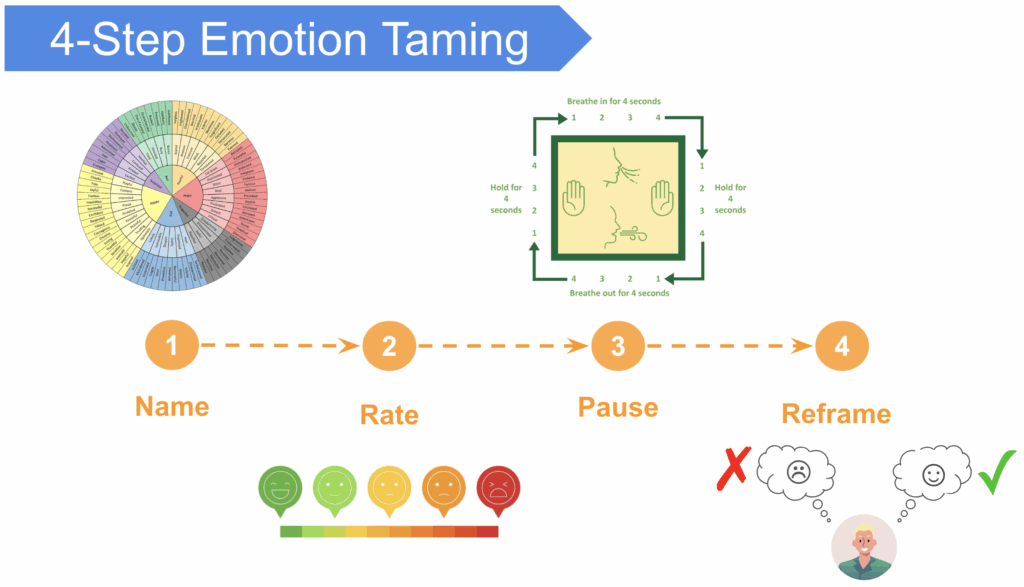Emotions Aren’t the Enemy—But They Can Be Loud
Ever slammed a door? Yelled at your loved ones and then regretted it afterwards?
When emotions run high, our actions can follow. And often, what feels urgent in the heat of the moment ends up creating consequences we didn’t actually want.
The truth is, your emotions aren’t the problem—they are signals. But they can lead to rash decisions if you don’t pause to interpret them.
Here’s a simple 4-step technique to tame your emotions before they take over.
The 4-Step Technique to Tame Your Emotions

1. Name the Emotion
The first step is to recognize what you’re feeling. Naming the emotion gives it shape and moves it from the reactive part of the brain (the amygdala) to the thinking brain (the prefrontal cortex).

If you need help to name your emotional, this feeling wheel by Geoffrey Roberts might help.
Say it clearly to yourself:
“I am angry.”
“I feel embarrassed.”
“I’m overwhelmed.”
This alone can start to soften the intensity of the emotion.
2. Quantify the Emotion
Now give it a score:
“How intense is this emotion right now, on a scale from 1 to 10?”
This helps you observe the emotion instead of being consumed by it. A “9 out of 10” frustration might feel like it’s in control—but naming and rating it gives you control.
3. Pause and Breathe
This is your moment of not reacting. Use a simple calming technique like Box Breathing (inhale 4 sec → hold 4 sec → exhale 4 sec → hold 4 sec)
This pause further lets your logical brain come back online and prevents knee-jerk responses.
4. Reframe the Problem
Now ask:
“What is this emotion trying to protect me from?”
Emotions often show up as protectors. Anger might be shielding you from feeling dismissed. Anxiety might be trying to keep you safe from rejection. Reconstructing the problem helps you uncover what your deeper needs are—and respond to those instead of reacting to the surface trigger.
Read more about reframing here
Real-Life Example: An ignoring spouse
Imagine this: Your spouse ignores your question. Your chest tightens. You want to yell at them to get some well-deserved attention.
Instead, try the taming process:
- Name it: “I’m feeling disrespected and inferior.”
- Rate: “It’s about a 7 out of 10 right now.”
- Pause: Do several box breathing.
- Reframe: “This emotion is protecting my need to feel respected and valued.”
From this calmer space, you might choose to wait, gather your thoughts, and even defer this conversation—one that leads to growth instead of conflict.
Final Thoughts: Emotions Are Messengers, Not Masters
You don’t need to suppress your emotions—or act on them immediately. The goal is to listen without letting them drive your decisions.
The next time a strong emotion hits, try this:
Name. Rate. Pause. Reframe.
It only takes a few minutes—and it could save you from days of regret.